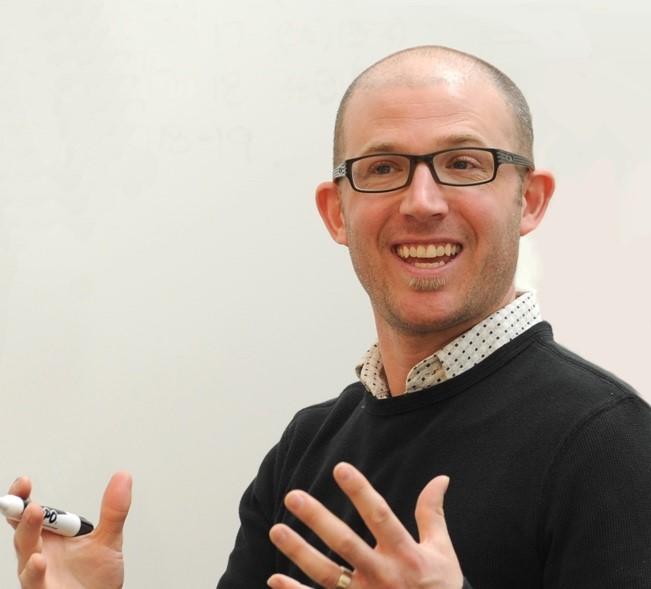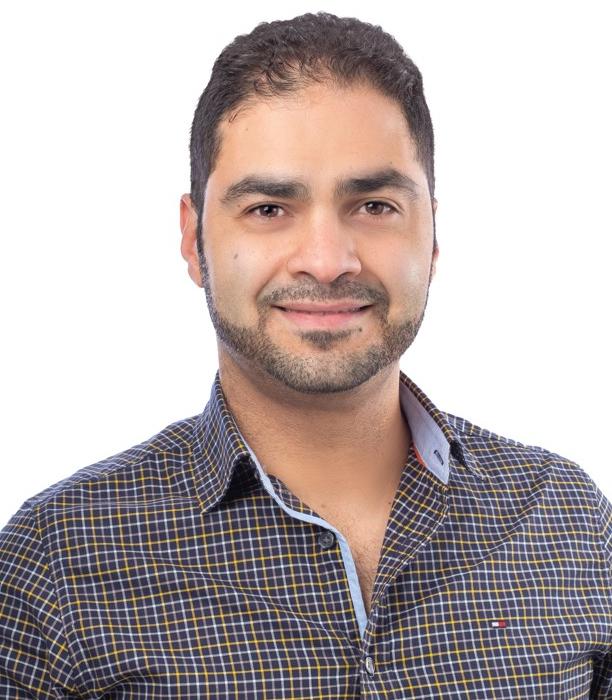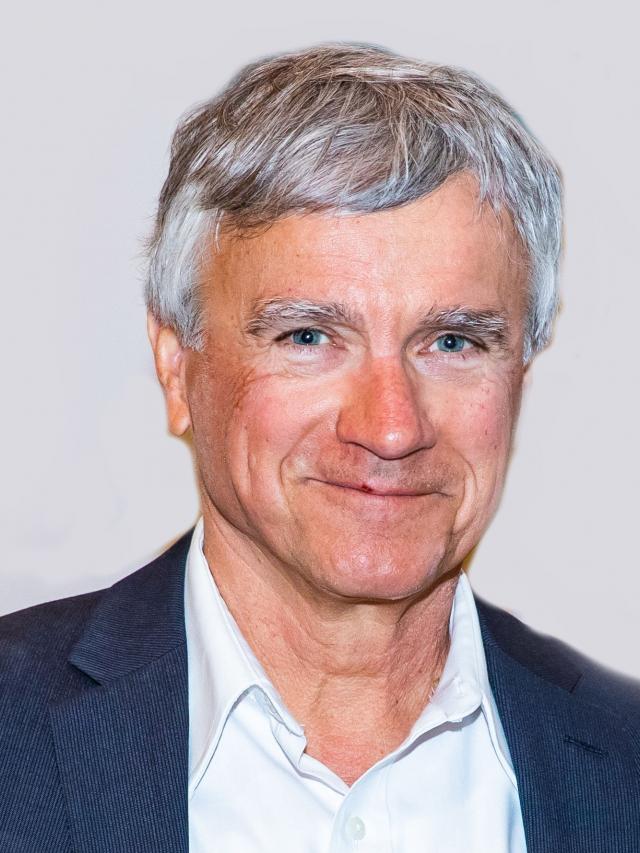
Dr. Alex Bruton
Biography
Dr. Bruton is a several time entrepreneur of both social and technology businesses, and he's spoken at and worked with corporate and educational leaders from Moscow, to Mexico, to Seattle, to Waterloo - including an invited talk at Google. He has worked in corporate contexts as an inventor, engineer, product and product manager, research manager, and cofounder of an innovation department (the latter failing spectacularly). He holds an MBA in innovation and marketing and PhD in engineering, and has been tenured in both a business school and an engineering school. In July he will be promoted to Teaching Professor at the University of Calgary’s Schulich School of Engineering where he teaches innovation, entrepreneurship, and engineering, and does research on how best to teach and learn for success in these areas. He's VP of Pedagogy and Learning at the United States Association for Small Business and Entrepreneurship (USASBE), founder of the USASBE Teaching and Learning Scholars Program, and International Entrepreneurship Educator in Residence at Tec de Monterrey. He was founder and faculty director of the Spark School for Innovation by Design and he co-founded the Straight Up Business Institute, which serves over 200 universities worldwide.
Session Information
Professional skills by design for scientists and engineers
Date: June 24, 25, 26 2019, Times: 09:00–11:25 am and 1:00–3:25 pm, Location: ENG 224
This short course provides an engaging and dynamic professional learning experience through which scientists and engineers will develop and practice their skills and competencies in the following areas: 1. Getting from research to technology, to customer, to product, to business opportunity 2. Strategic ideation and design thinking for accelerated product and new venture design 3. Pitching yourself and the things about which you’re most passionate in ways that people understand Versions of this course have been delivered in western Canada through the Spark School for Innovation by Design, to engineering graduate students at the University of Calgary, and to business leaders and their teams trying to build these ‘muscles’ within their organizations. The same approaches were used in workshops in Toronto and Waterloo delivered to STEM-educated personnel after Blackberry’s challenges in 2013-14. And they have been delivered in top innovation and entrepreneurship programs in places ranging from Mexico, to Moscow, to many institutions in the United States. Participants can expect to be engaged in foundational and deeply effective approaches to building their own personal practices, they will get to use leading edge tools, and, through the process, they’ll be challenged and supported in becoming better scientists, engineers, and researchers.

Ahmed El-Ghazouly, Cancel Inc.
Biography
Ahmed El-Ghazouly is the National Professional Services Manager at Cansel Survey Equipment. He earned his BSc in Civil Engineering and MSc in Survey Engineering form Alexandria university, Egypt and PhD in Geomatics from the University of Calgary, Canada. Ahmed is partnering with diverse team to analyze needs, define risks, design solution, communicate value, and drive profitable execution of complex technical, business and operational strategies with strong ROI for clients within engineering, surveying, construction, mining, architecture, manufacturing, utilities, forestry, and government sectors. He published many conference and journal papers on GNSS multipath mitigation and cycle slips detection and Precise GPS positioning for Static/kinematic applications.
Session Information
UAV Geomatics Market and Applications
Date: June 27, 2019, Times: 9:00–10:15am, Location: ENG 224
In this presentaion offered by Dr. Ahmed El-Ghazouly, he will provide an introduction to photogrammetry and the difference between Light Detection and Ranging (LiDAR) and photgrammetry. The current state of the drones market, new regulations and the difference between Aerial and Terrestrial projects and data collection. Then will shed the light the field workflow which includes mission planning, flight configuration and mission execution. Next, the data are transferred to the processing machine inorder to create the main deliverables, such as; Orhoimage, Point Cloud and Raster Digital Terrain Model (DTM). Couple of challenges might affect the project execution like the wind speed, blured images and the lake of control points espically at inaccessible areas. At the end, couple of different application-based deliverables will be presented to show the wide applications of drones.

Professor Charles Toth
Biography
Charles K. Toth is a Research Professor in the Department of Civil, Environmental and Geodetic Engineering, The Ohio State University. He received a M.Sc. in Electrical Engineering and a Ph.D. in Electrical Engineering and Geo-Information Sciences from the Technical University of Budapest, Hungary. His research interest and expertise cover broad areas of spatial information sciences and systems, including photogrammetry, multi-sensor geospatial data acquisition systems, LiDAR, high-resolution imaging, surface extraction, modeling, integrating and calibrating multi-sensor systems, georeferencing and navigation, 2D/3D signal processing, and UAS and mobile mapping technologies. Widely known worldwide for his visionary contributions to mobile mapping, he was a key architect of the concept development, and then did significant research in sensor georeferencing and digital imaging technologies. In fact, he is generally credited with the introduction of the term “direct and indirect georeferencing” in the photogrammetric community. He is one of the founding father of the MMT symposium series and has actively contributed to all of them. He has held many senior leadership positions in national and international societies, and is Past President of the American Society of Photogrammetry and Remote Sensing, served as the ISPRS Technical Commission I President for 2012-2016, and is the 2nd Vice-President of ISPRS, 2016-2020. He is an ASPRS Fellow, the recipient of numerous awards, including the 2009 APSRS Photogrammetric Award, United States Geospatial Intelligence Foundation (USGIF) Academic Achievement Award 2015, ISPRS Schwidefsky Medal Winner 2016, several Lumley Research Awards from OSU, and various best papers awards.
Session Information
Navigation Components of Mobile Mapping Systems: Vision Based Navigation
Date: June 28, 2019, Times: 9:00-10:15 am and 10:30-12:00 pm, Location: ENG 224
In this tutorial offered by Dr. Charles Toth, he will provide an overview of the state-of-the-art navigation sensors and techniques suitable for various close range navigation and georeferencing of mobile mapping systems, including UAS, wearable/personal navigation, and driverless vehicle platforms. First, the technology trends and developments are reviewed, and then a short analysis is provided on sensors and algorithms. While there are many technologies to facilitate navigation indoors or in any GPS-challenged environments, the mostly widely used techniques are based on imaging sensors, including active and passive sensors. The main part of the course is the discussion on the fundamentals of image based navigation solutions. Finally, the application examples presented will include performance assessments and brief discussion on the operational conditions.
We acknowledge the support of the Natural Sciences and Engineering Research Council of Canada (NSERC).
Nous remercions le Conseil de recherches en sciences naturelles et en génie du Canada (CRSNG) de son soutien.
MMSS Group

